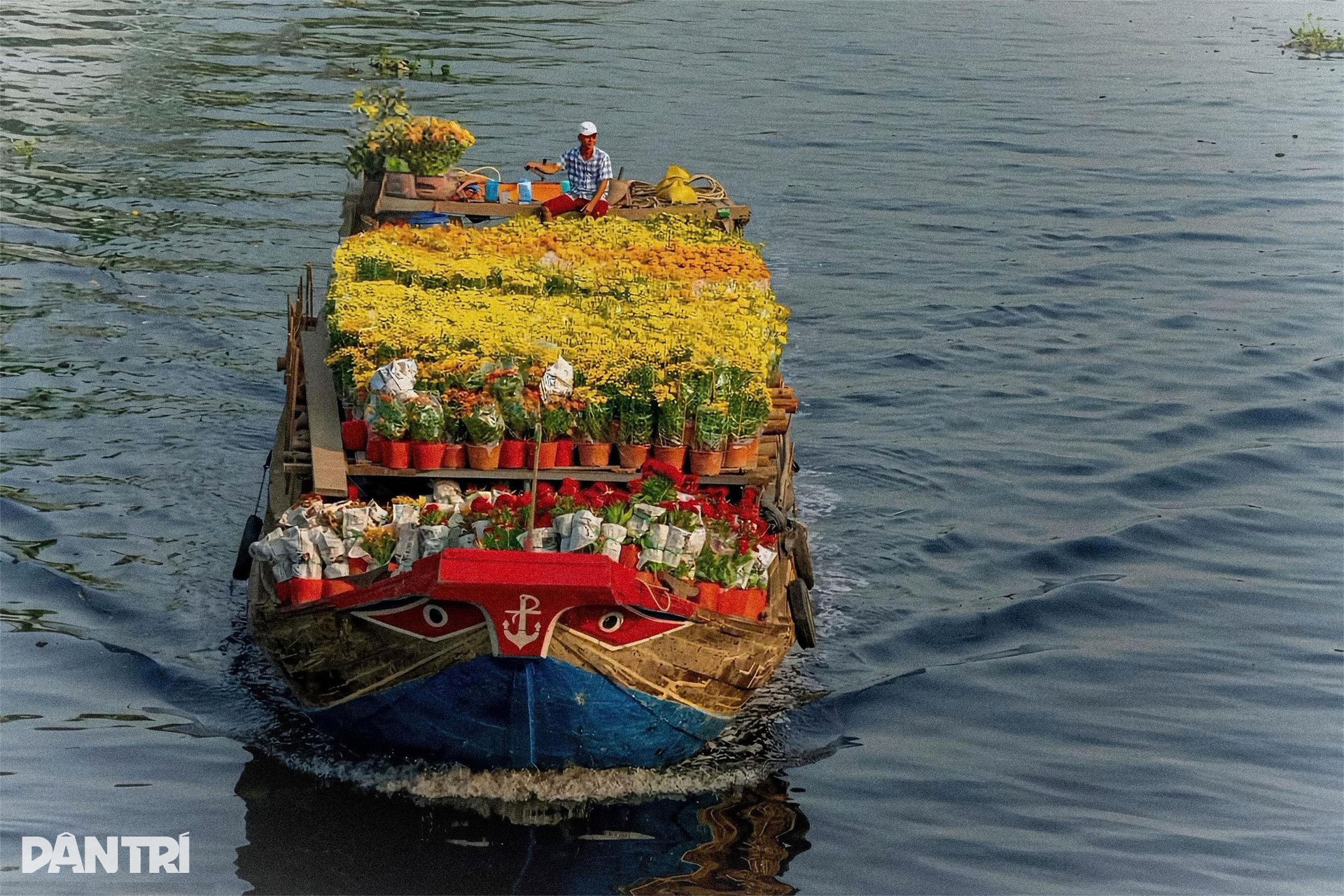
The spring flower market at Binh Dong Wharf (District 8, Ho Chi Minh City) is a beautiful cultural feature, associated with many generations of Vietnamese people. Every spring, this place is bustling with flowers, becoming a bustling trading point between Ho Chi Minh City and the provinces of the Southwest.
On the 20th of Tet, flower boats of farmers in the West began to flock to Binh Dong wharf. They carried with them the hope of a good business, hoping that all the flower pots would be taken away by buyers, so that when the tide receded, they could return home to celebrate Tet with their families, in the joy of a full flower season.
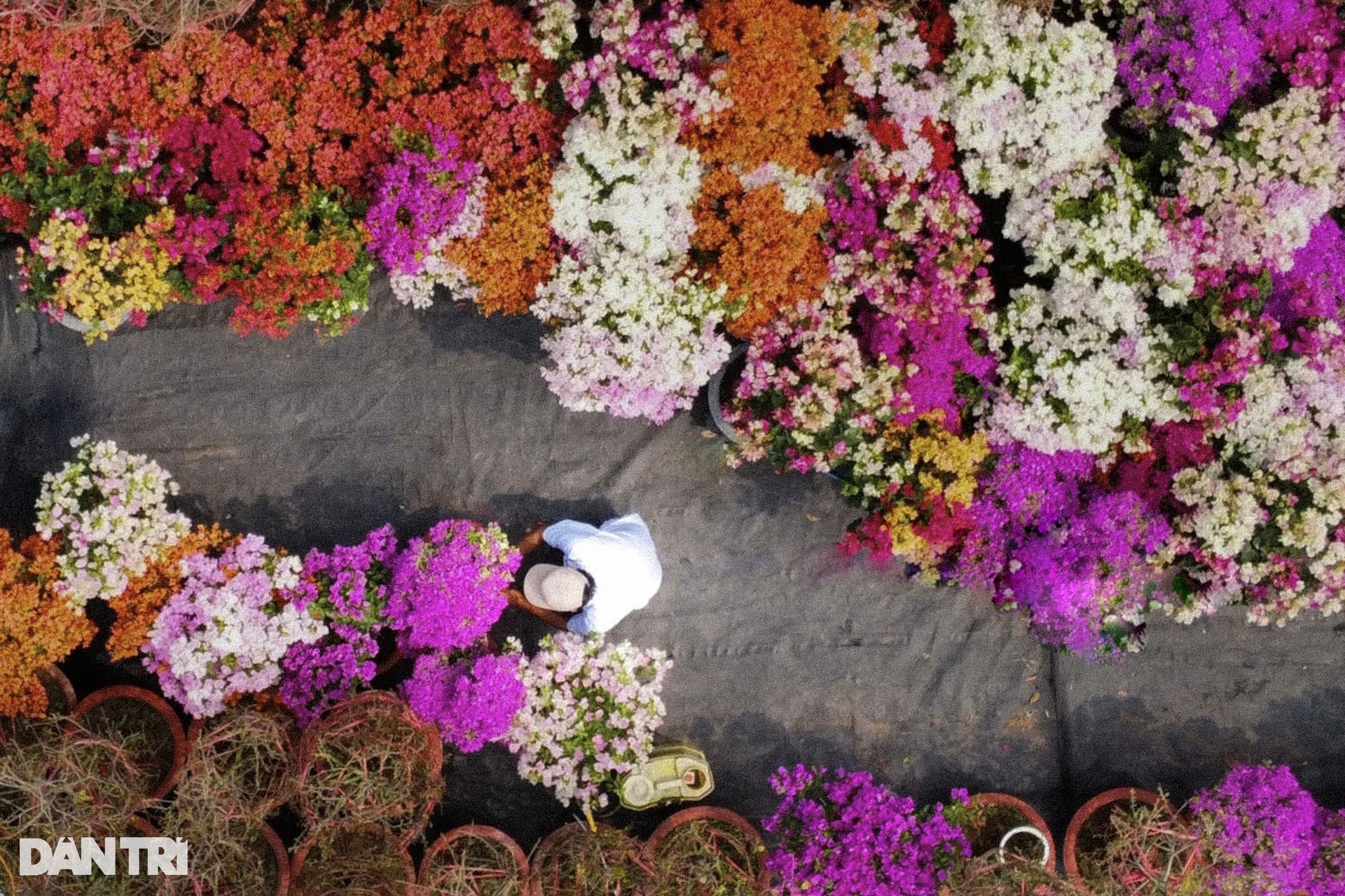
On the wharf, under the boat, everywhere are brilliant apricot flowers, chrysanthemums, bougainvilleas, sedums... competing to show off their colors, just like that, they bring a brilliant spring to Ho Chi Minh City. However, in the space filled with colors, mixed with joyful laughter and invitations, somewhere still appears quiet worries in the eyes of the flower sellers.
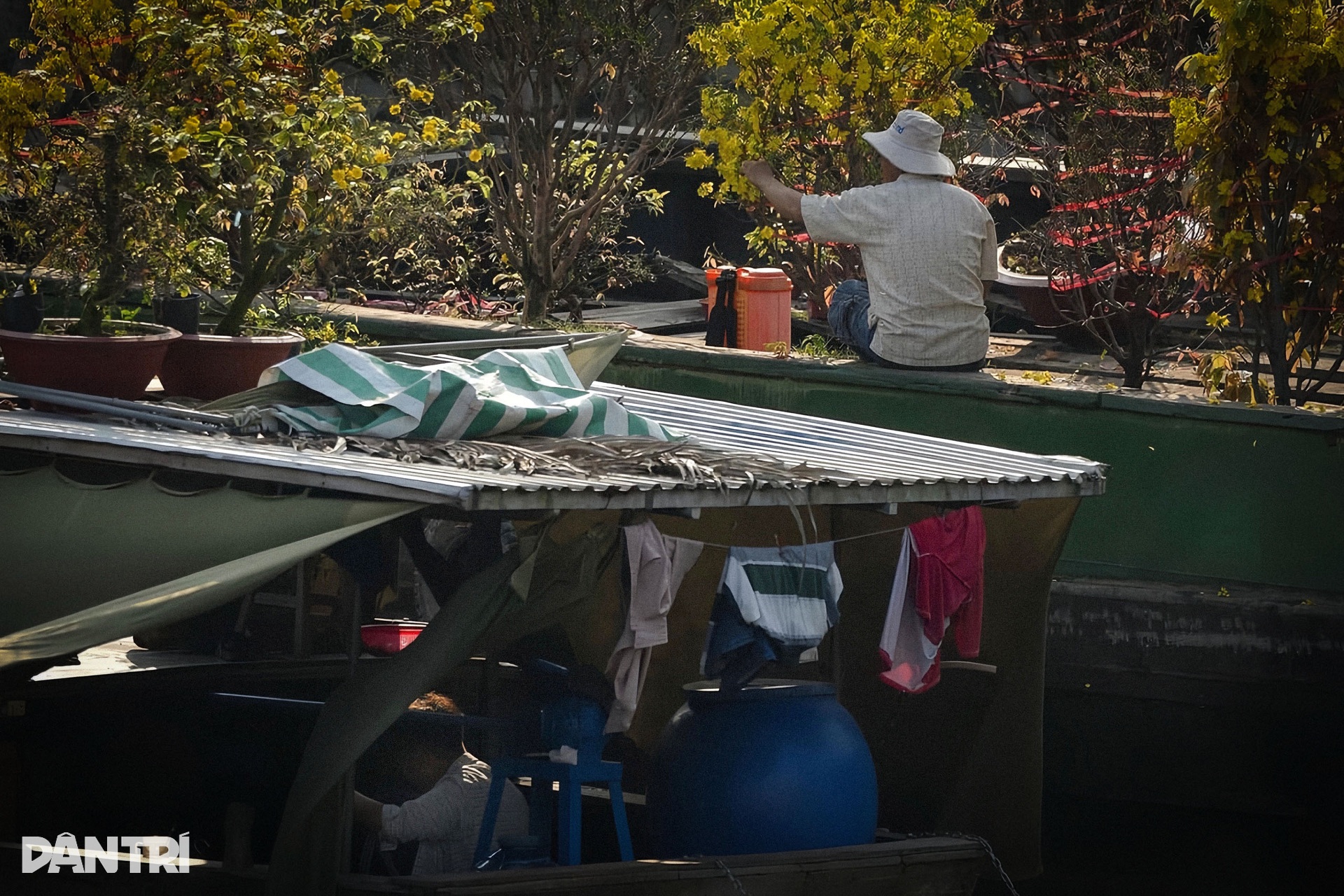
Most of the traders who bring flowers to Binh Dong wharf to sell have to rent boats at prices ranging from 12 to 16 million VND, each boat can carry more than 1,000 small and medium-sized apricot trees. If they rent a car, the cost is lower but the amount of flowers transported is smaller. So, during the days leading up to Tet, farmers "eat and sleep" with flowers on a boat drifting in the middle of the city.

All the activities of the flower sellers take place behind the boats. In front are the bright yellow and red colors of flowers, but behind is a mess that has not yet been arranged. In the middle of that space filled with the scent of spring are worries - when it is already the 28th of Tet but more than half of the flowers are still on the boat, not finding buyers.
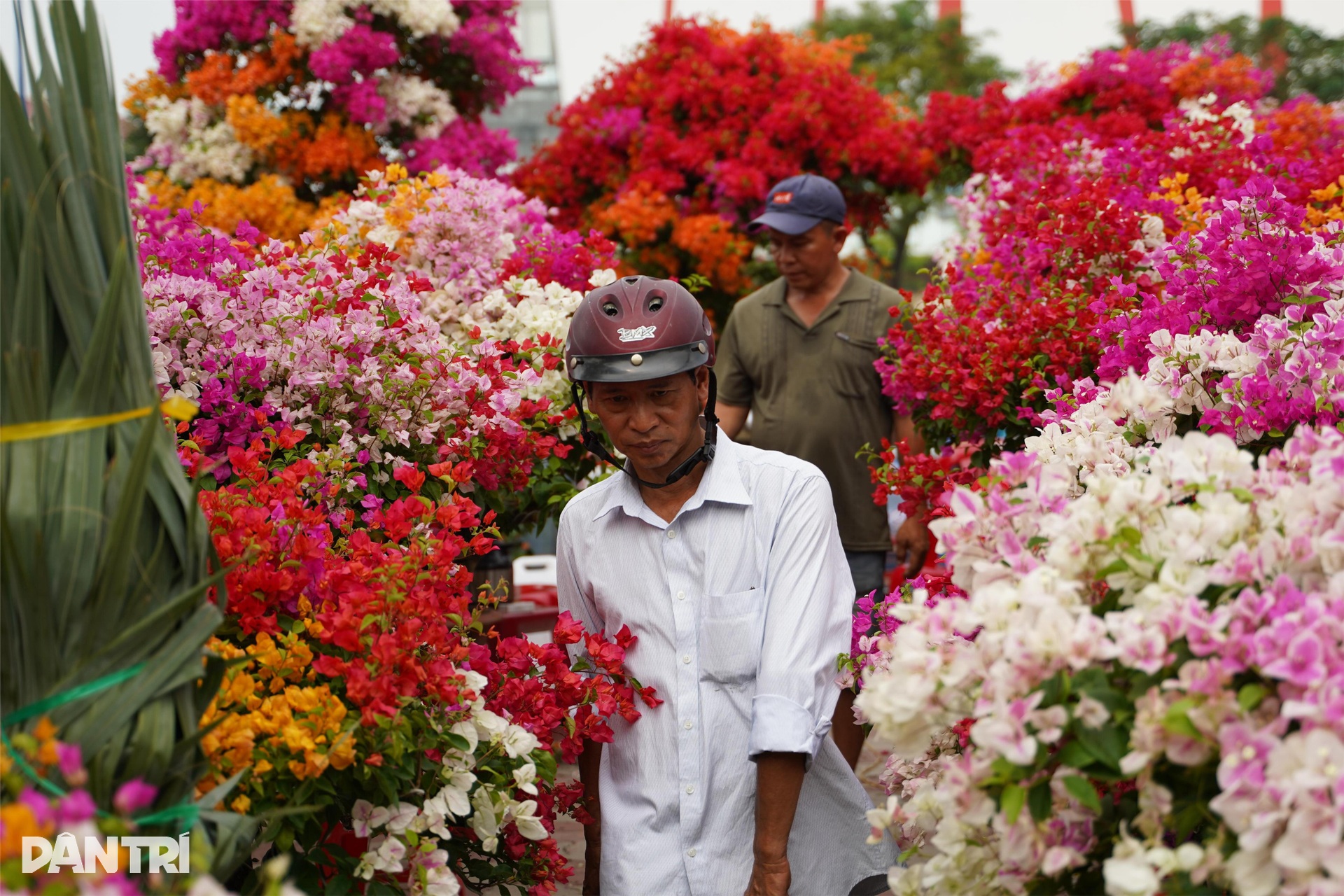
On the 29th of Tet, many people still tried to stay behind in the hope of selling the remaining flowers. Many people walked through the flower markets, stopping at each stall, carefully choosing but not rushing to buy. Just like that, many people came to ask but still not many people bought.
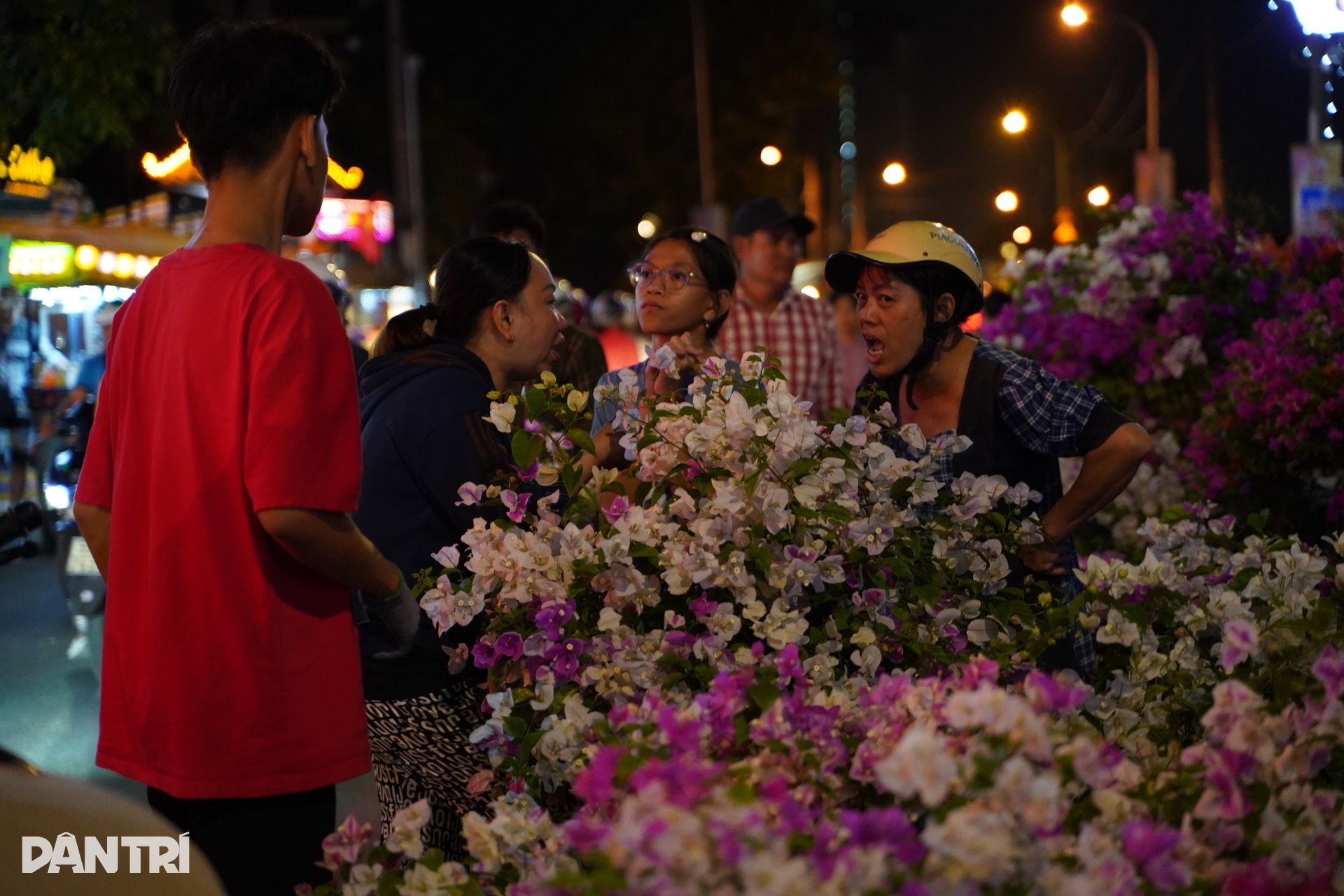
The story of flower price gouging has become an eternal story, a persistent "tug of war" between flower buyers and sellers over many years.
Only on the 29th night of Tet (ie 30th of Tet every year) do people who go to the market really start buying flowers. Many customers wait until this time with the mentality that "unsold flowers will be cheaper". Flower sellers feel heartbroken when they hear this. Because to have a beautiful pot of flowers, they have spent a lot of effort and money, not to mention the losses due to natural disasters and erratic weather.
When it comes to the flower industry, people often think of beauty, but few people know that behind that lies a myriad of worries. In the past, flower growers feared the weather the most, just hoping that the sky would not rain out of season, or suddenly turn cold so that the flowers would bloom on time. But now, they have a new worry - people's habit of buying flowers on the afternoon of the 30th of Tet.
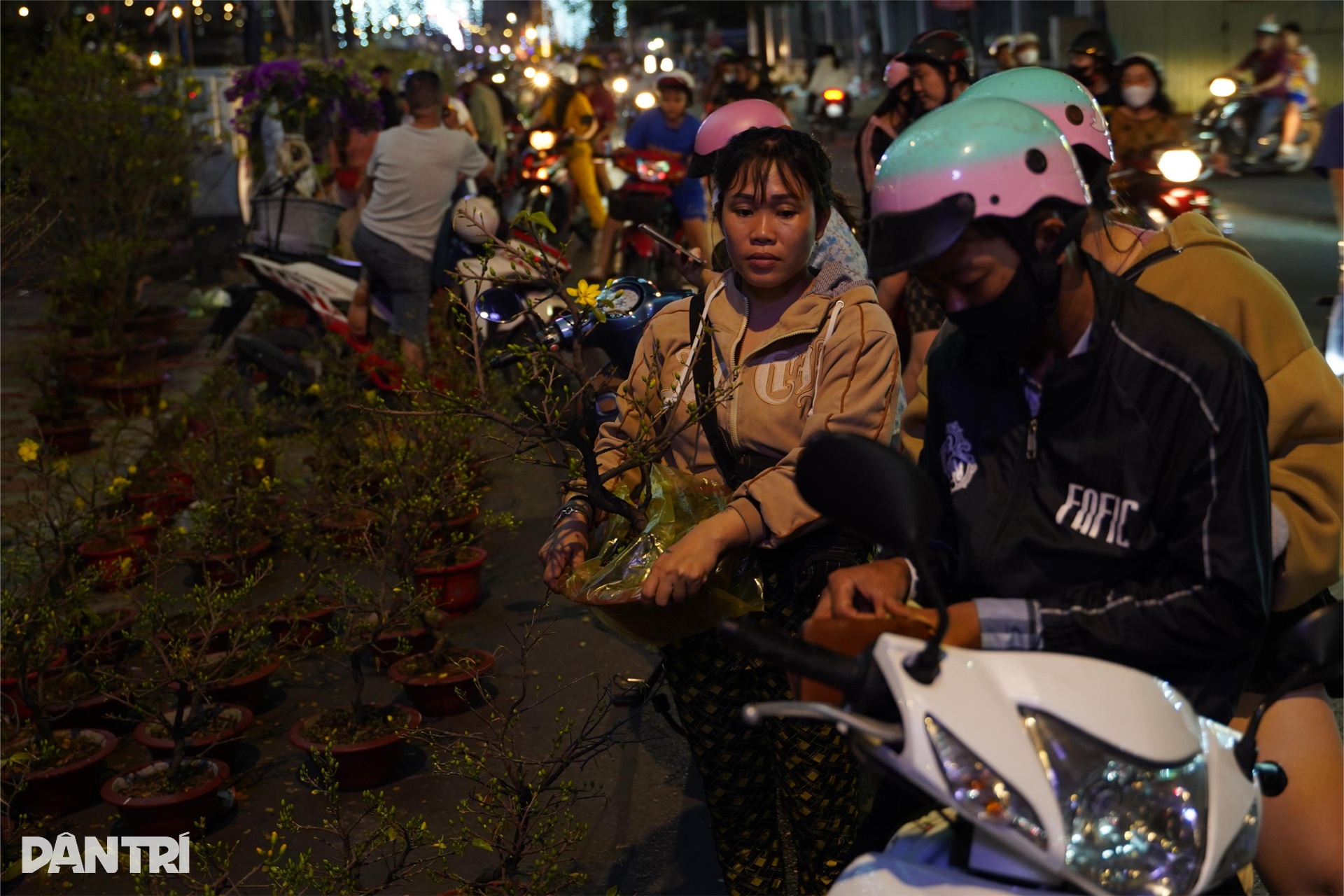
"This happens every year, on the 30th night, there are many customers because everyone wants to buy cheap flowers. Sometimes a pot of flowers costs several hundred thousand, but by late at night it is only half that, or even cheaper. Buying at a good price, the customer is happy, but the seller feels sorry...", a vendor at Binh Dong flower market shared.
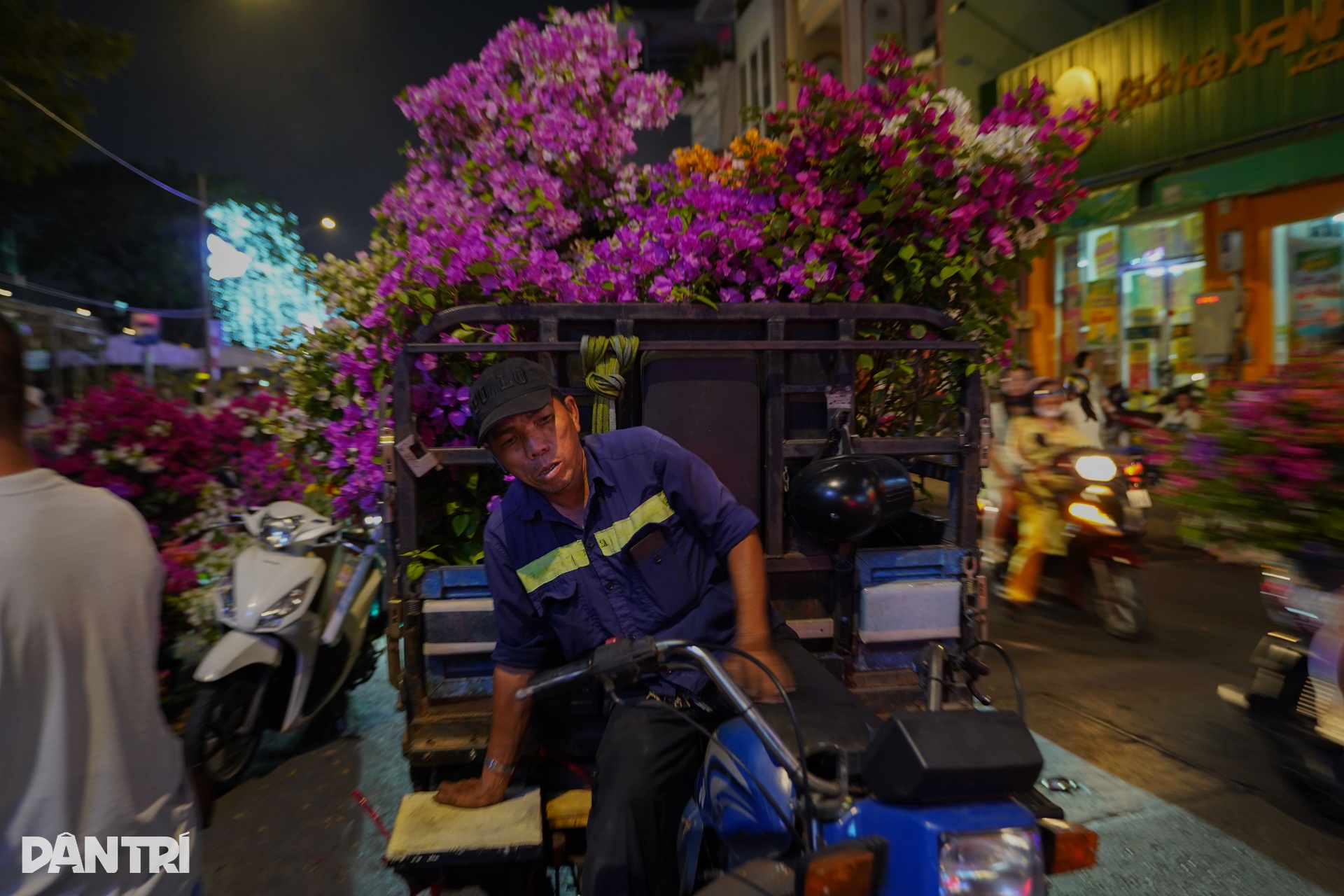
This is the time when flower carriers earn extra income before the New Year. Thanh, a flower carrier with a tired face after a day of continuous flower transport, shared: "If I transport more flowers, I will have more money for Tet, I am very happy, but I also feel sorry for the flower sellers because it is only today that they can sell a lot, and at a cheap price."
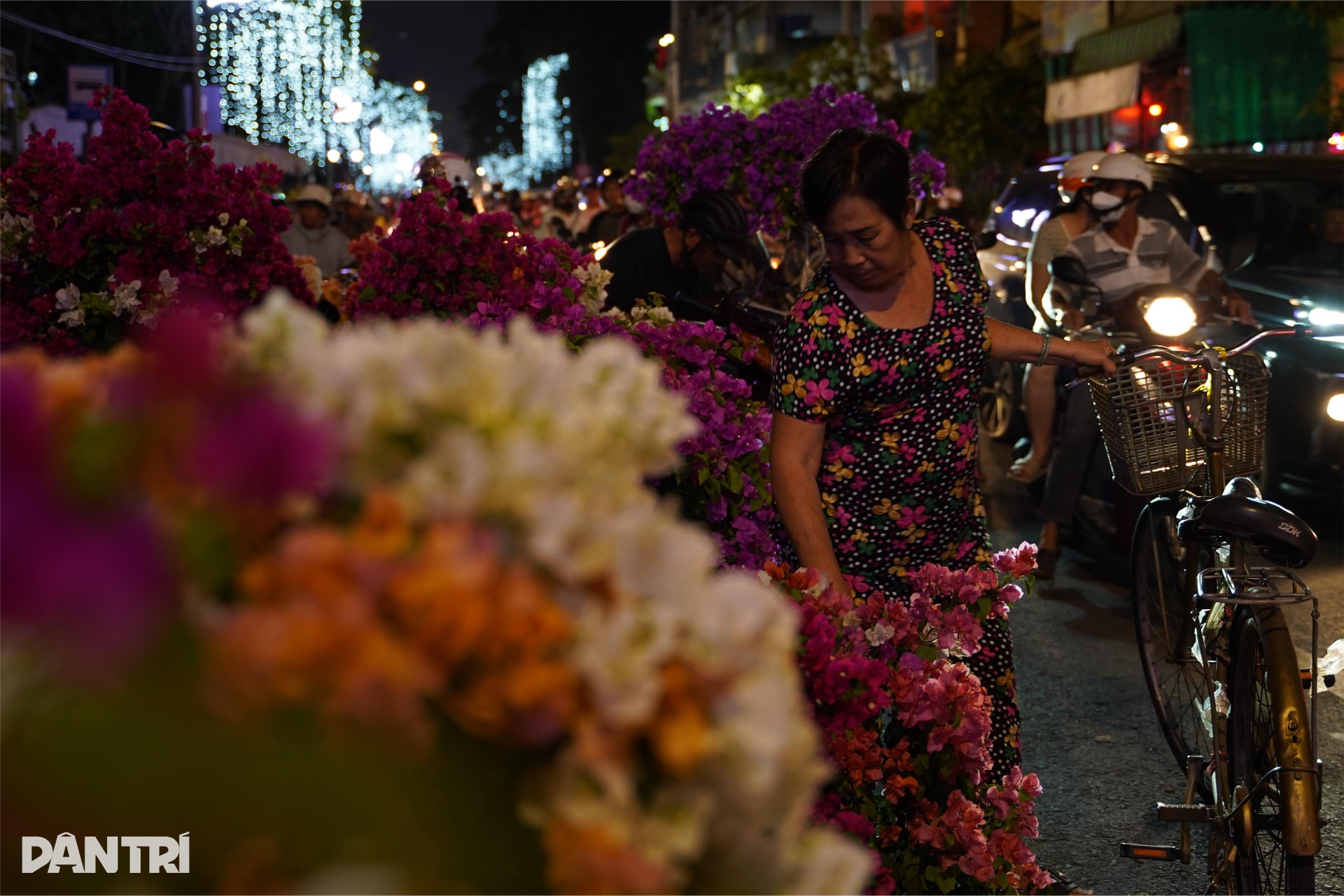
Granted, everyone hopes for a full Tet, with apricot branches and chrysanthemums in full bloom. But not everyone can afford to buy flowers early, especially when the economy is difficult, spending in the spring is even more cautious. Many poor workers still want a pot of flowers to decorate their house. But the money to buy a pot of flowers can be used for the offering tray and Tet meal, so they wait until the afternoon of the 30th to buy cheap flowers.
Workers work all year round and only have a little time to rest and take care of their families at the end of the year. They can only take the opportunity to buy flowers on the last day of the year, when work has been temporarily put on hold.
There are also many people who, although well-off, are busy and only have time to visit the flower market on the 29th or 30th of Tet to quickly choose a pot to have the spring atmosphere.
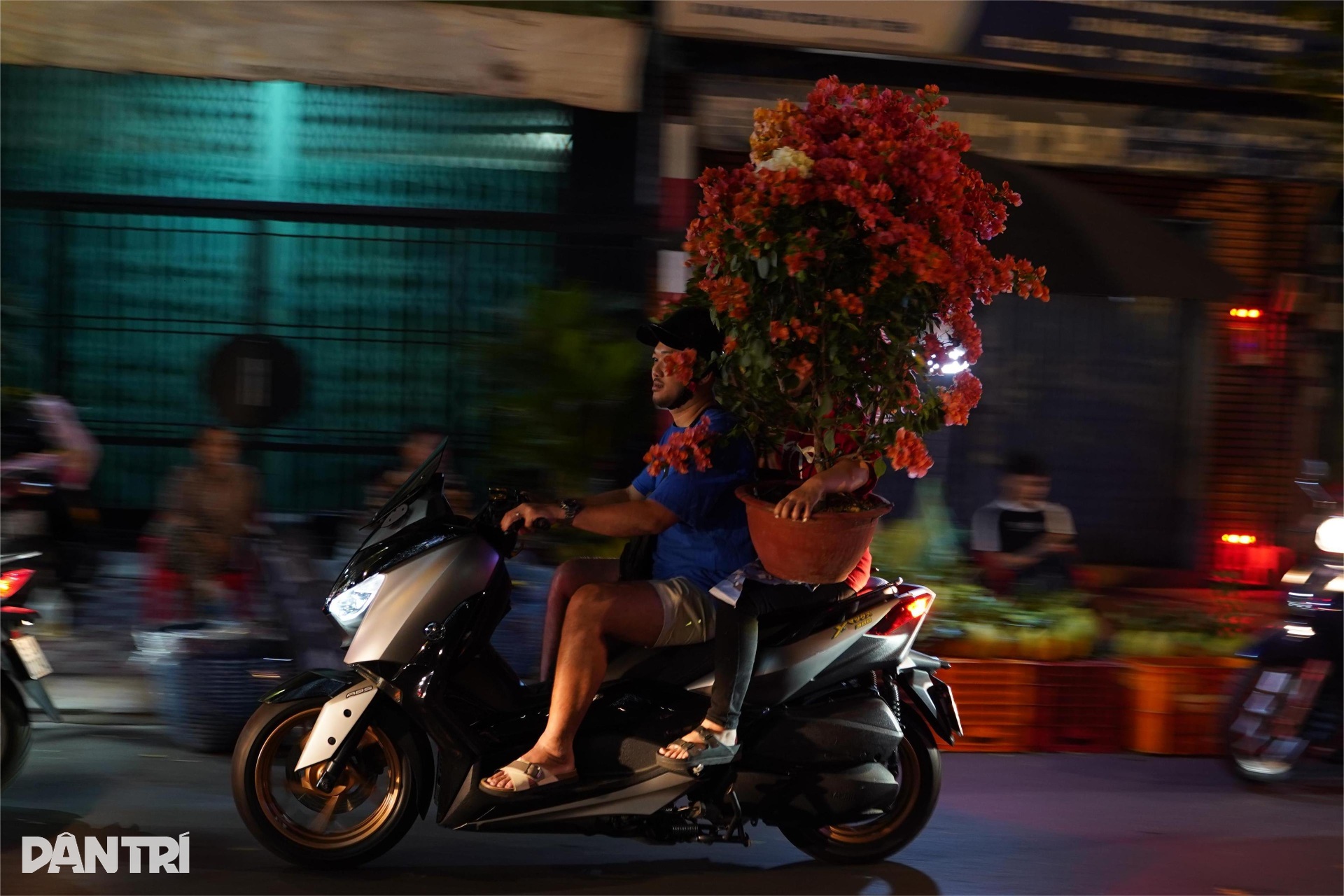
However, it cannot be denied that there are some people who, despite having plenty of money and time to choose flowers, still like to wait until the last day to buy at a cheap price or bargain and squeeze the price to the limit.
There are two types of flower traders on Tet holiday: small traders and garden owners.
Small traders are people who buy flowers from farmers and then bring them to the city to sell. They have business experience and know how to calculate to avoid losing money. In the early days, they sell at high prices to make up for the losses in the later days. For them, flowers are a commodity, which can make a profit or a loss, but it is still part of the business equation.
Garden owners are different. They spend the whole year working hard to take care of their flowers, paying attention to every step, hoping to sell them at a good price for Tet to prepare for their families. Each flower branch is a part of their effort, a part of their heart, so it is understandable that they shed tears when the price of flowers is forced down.
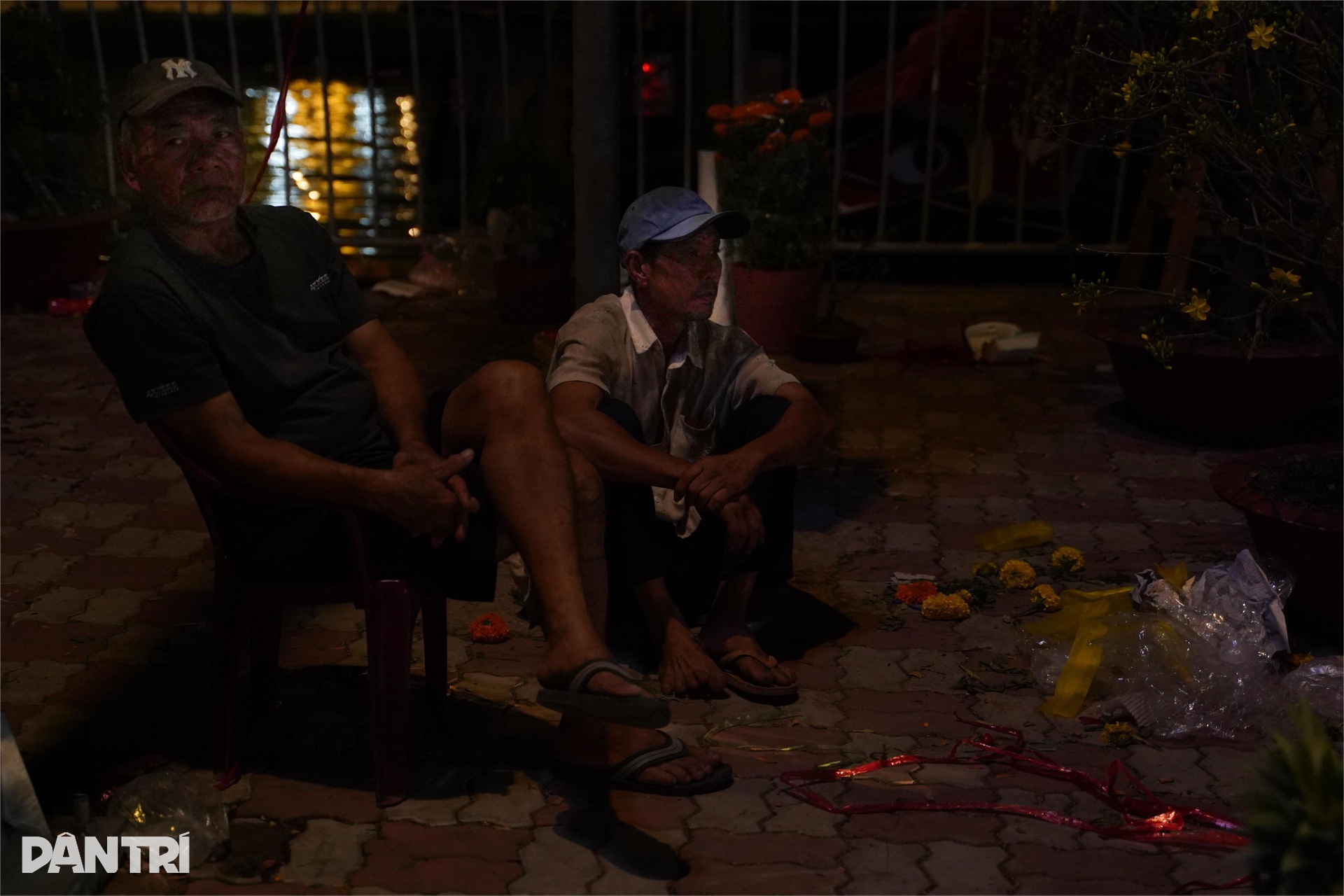
Has anyone ever witnessed the scene of flower growers disconsolately packing up their stalls on the night of the 29th and 30th of Tet and understood their sadness? They bring spring to the city, but they themselves cannot bring spring back home. Many people do not dare to go home early, not because they regret losing a few flower pots, but because they regret the effort, regret the dreams placed on the last days of the year.
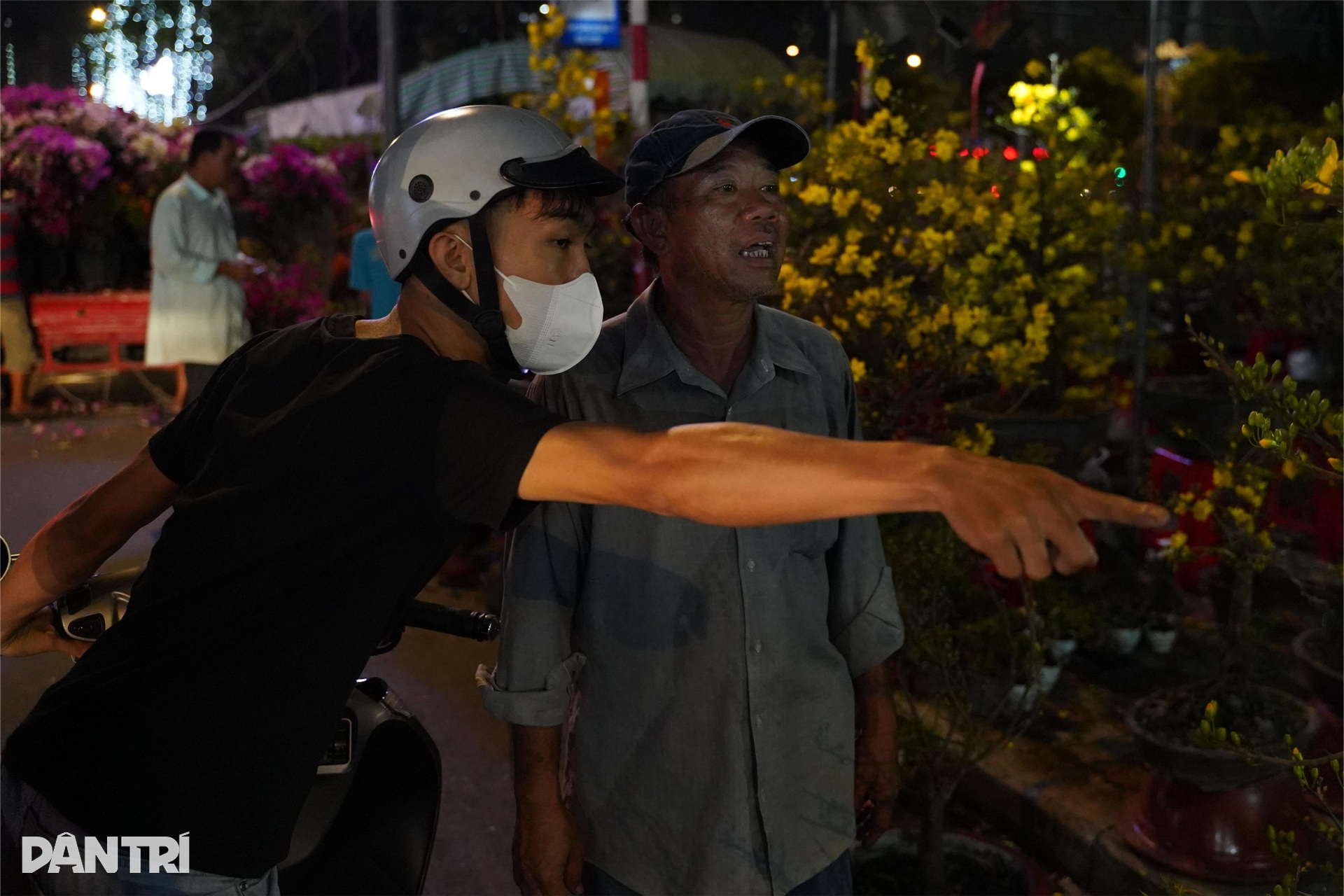
"Uncle, how much is this tree?" - the customer asked. Mr. Tu Hung pointed to the old apricot tree and replied: "That tree is 9 million, my child". The customer offered a lower price: "Is 5 million okay, my child?". Mr. Hung shook his head: "No, that tree is old and very beautiful, I can't sell it that cheap, my child". After being refused to sell because of the unsuccessful bargaining, the customer left, the bitter taste still stuck in Mr. Tu Hung's throat.
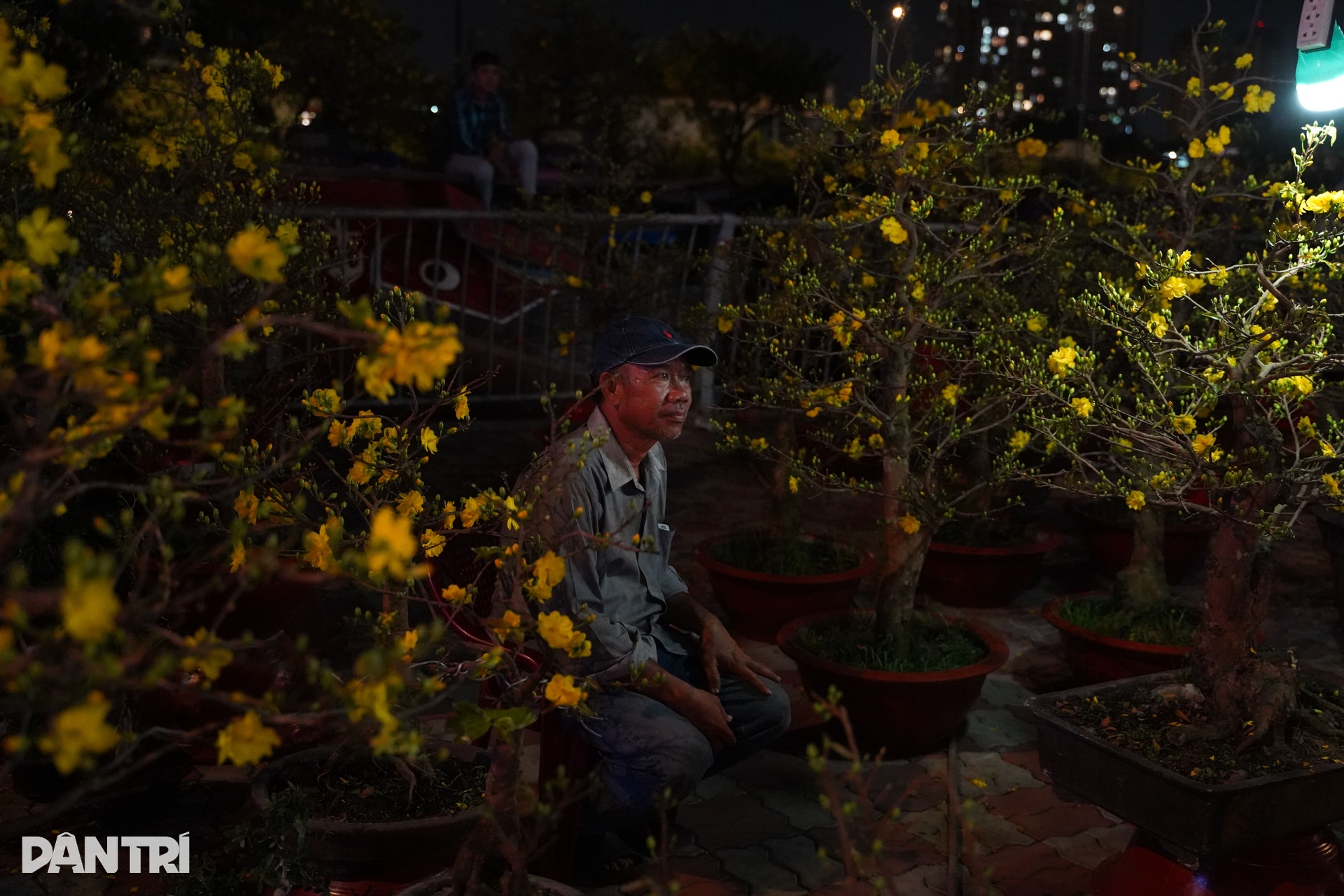
Mr. Hung said that taking care of apricot trees in a year requires not only time but also a lot of effort. "From picking leaves, fertilizing, watering to hiring someone to help take care of apricot trees, it is extremely hard. Fertilizing is also a big problem. If you buy fake fertilizer, the tree will have damaged roots and die, which is a pity," Mr. Hung shared.
Every year, he has to spend a large sum of money to hire a boat to transport the apricot flowers to Binh Dong wharf - the main consumer of apricot flowers for Tet. Each trip costs tens of millions of dong, but he still has to try because his family relies on this spring flower crop to have money for Tet.
No one understands the feelings of flower growers better than themselves. After a whole year of hard work, just waiting for the Tet flower season, yet by the evening of the 30th, when the flower market gradually empties, the flower pots are still in disarray. The sellers quietly clean up, their eyes filled with sadness as they have to sell cheaply, sometimes even giving away the flower pots they have carefully cared for.
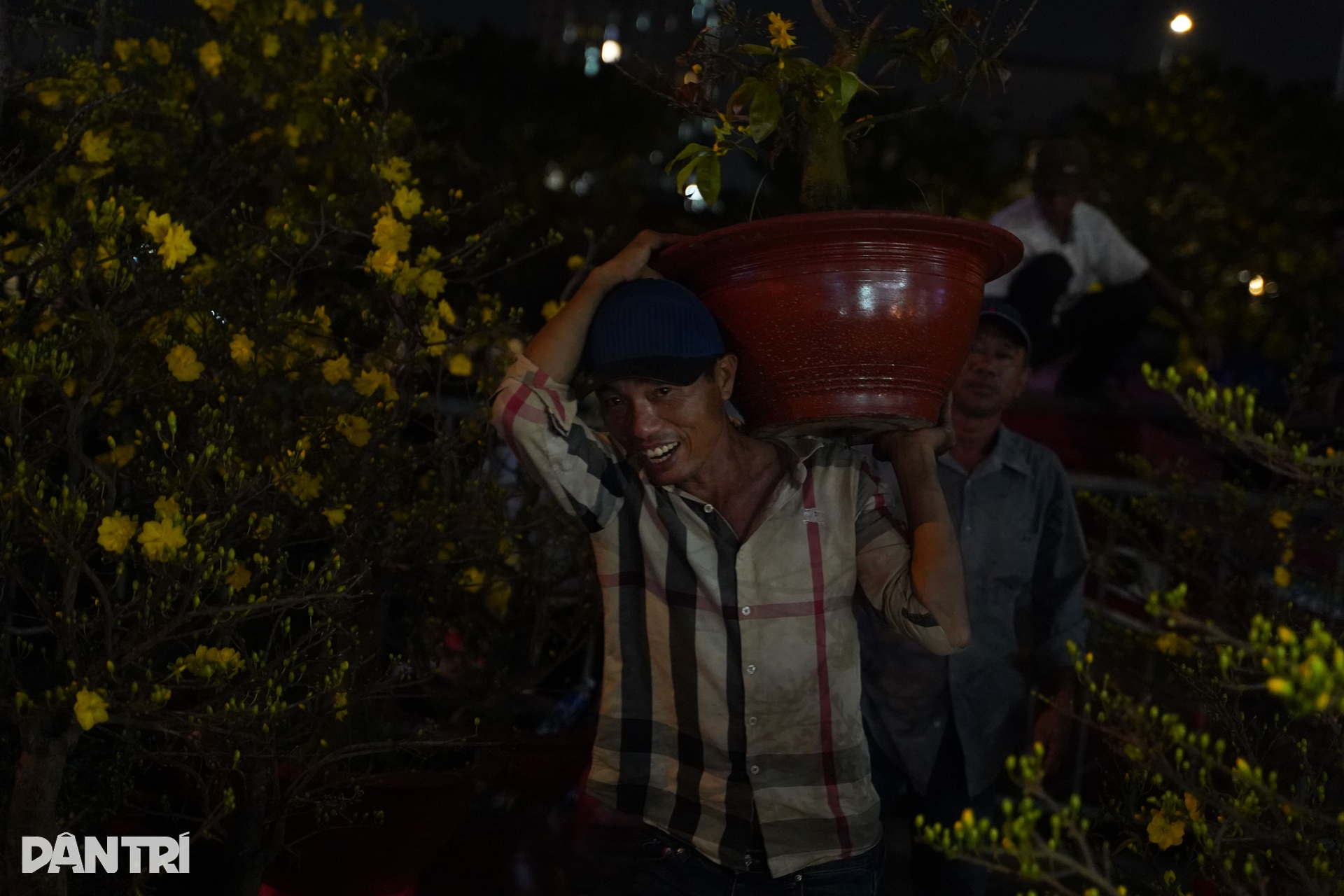
"Many customers come to buy but argue over every penny, spending so much effort to count until the 30th. Many times when we take in the money, we smile, while inside we feel like we are on fire," Uncle Hung's son shared.
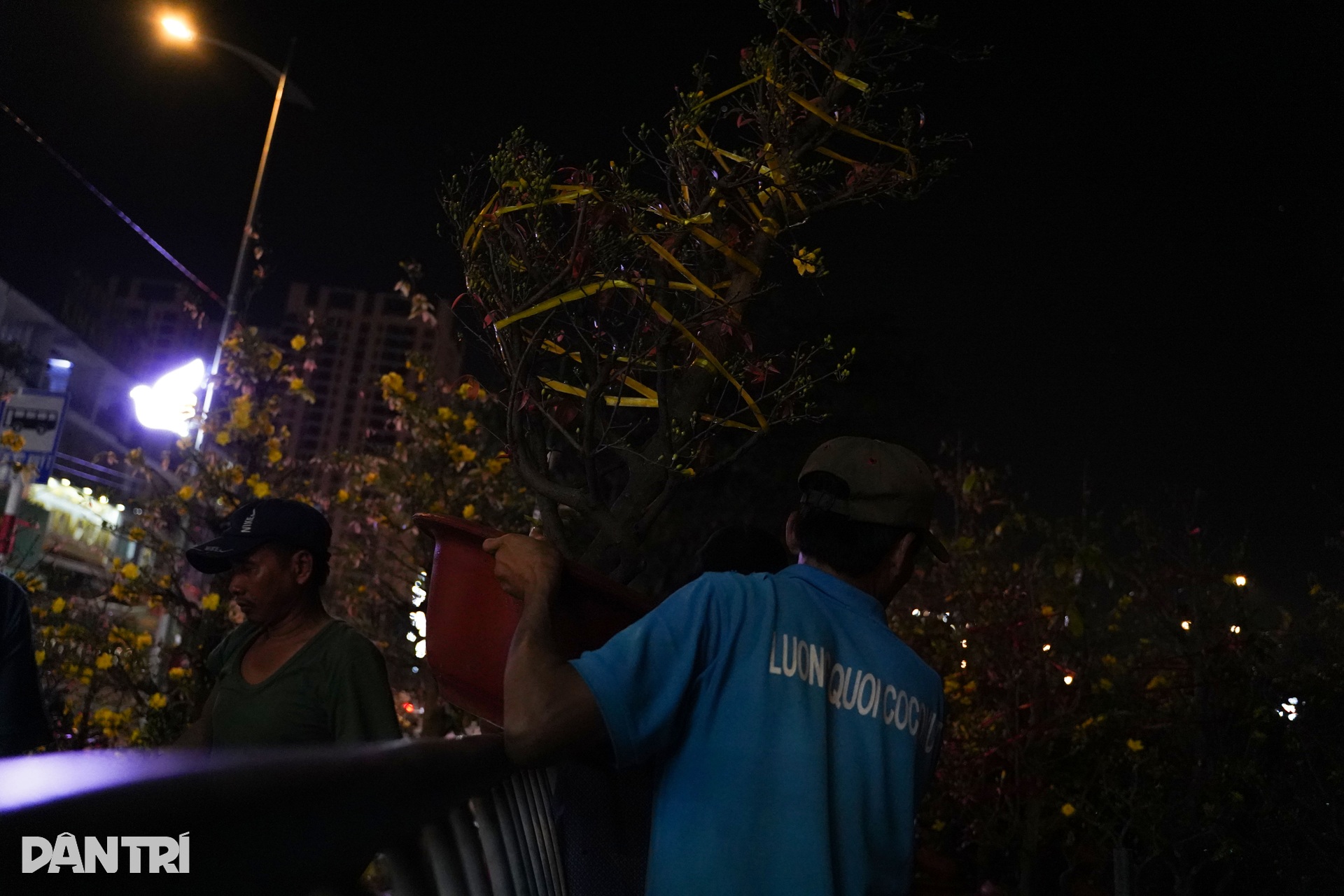
At 2am on the first day of Tet, the men were still working hard to load the apricot blossoms onto the last boat remaining at Binh Dong wharf to return home for Tet. That was Mr. Tam's boat, which had arrived at Binh Dong wharf on the 21st day of Tet.
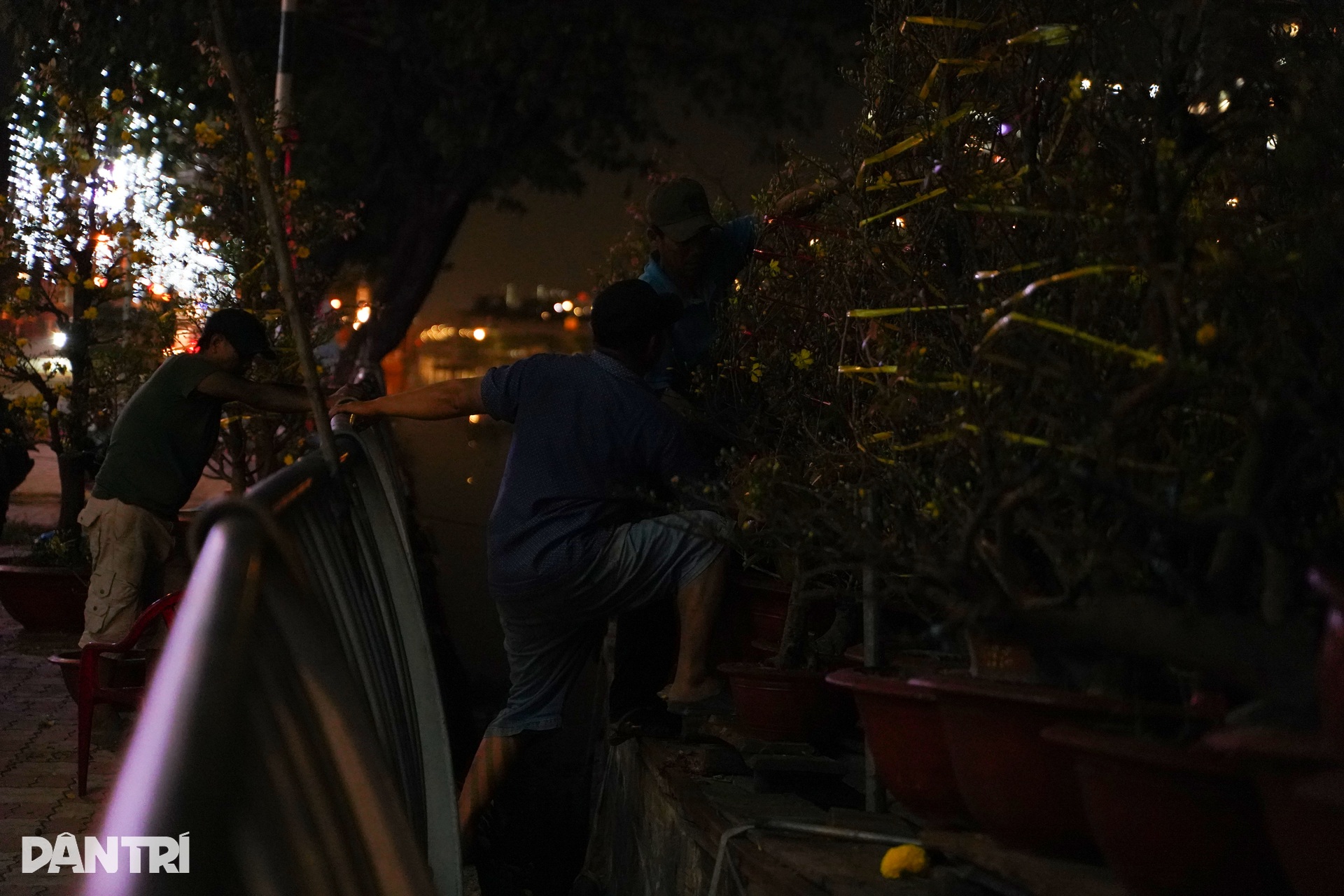
While working together, Mr. Tam confided: "This year I brought up more than 500 apricot trees. Now I'm back with only 300 trees left. This year, I probably won't have Tet, my child."
Mr. Tam’s words echoed in the early morning of the first day of Tet, carrying with them the thoughts and feelings of a farmer in the countryside. Every year, Mr. Tam went to the city to sell apricot flowers, waiting for a happy and fulfilling Tet with his family. But this year, Tet had not yet arrived…
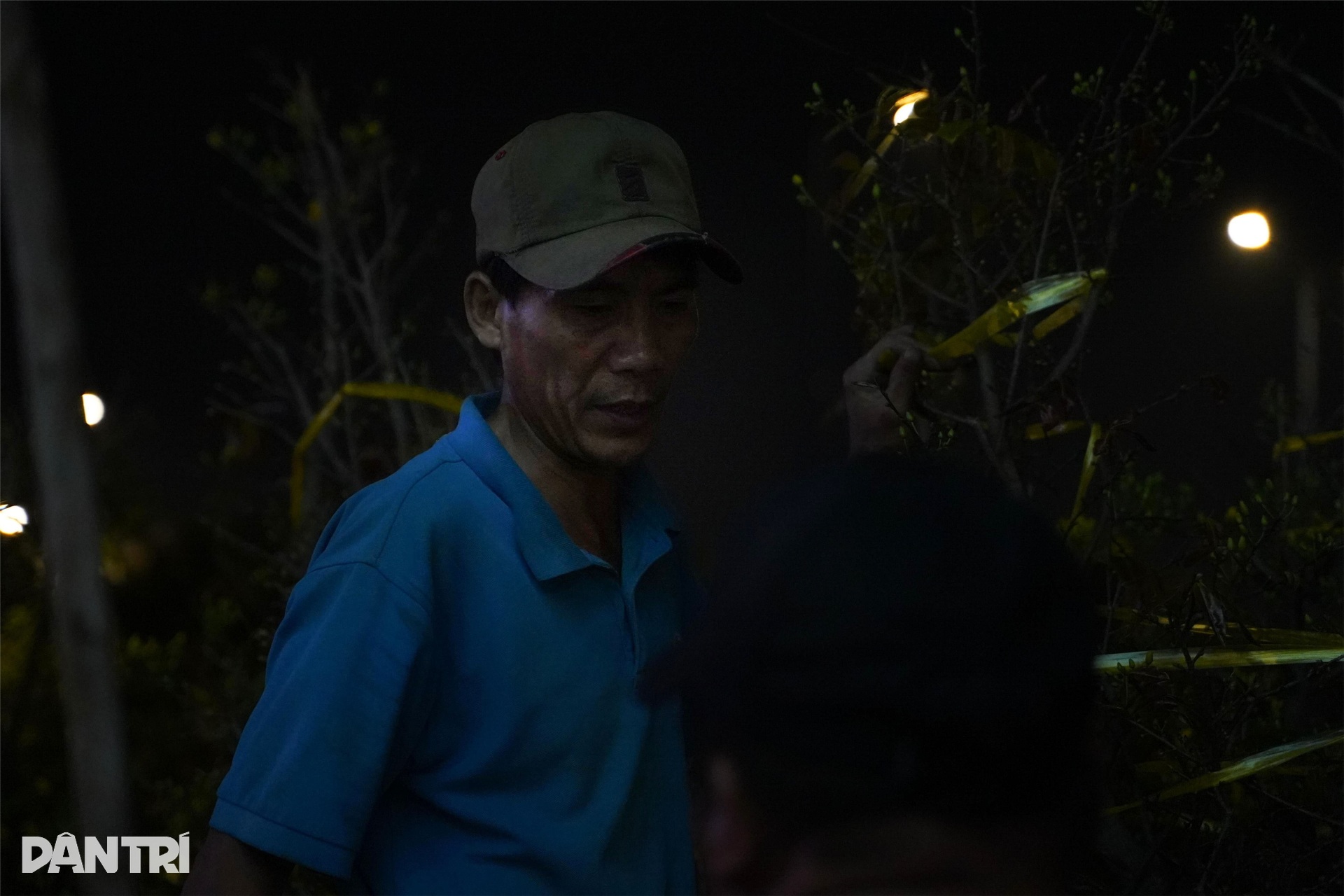
For flower growers, this is not simply a livelihood, but also a career. In good years, they are well-off, in bad years, they are in trouble. But no matter how hard it is, they still cannot leave. Because flowers have become ingrained in their lives, in every hoe stroke, every drop of sweat in the soil, and even in the hopes of each spring.
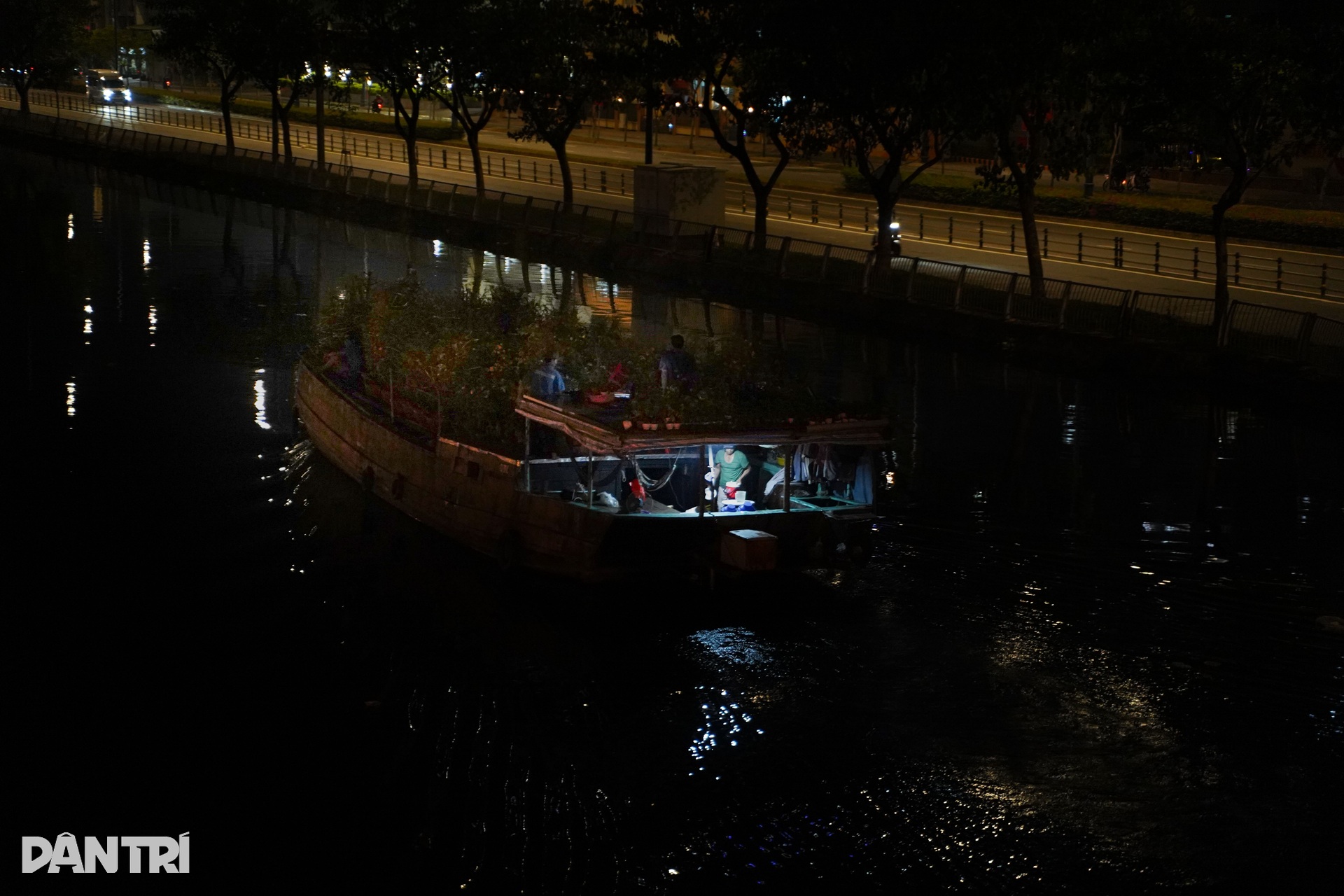
At 3am, under the flickering street lights, the boat left silently, carrying the flower pots that had not yet found their owners.
They - farmers from the countryside, sailed to the city in search of a prosperous spring, but on the way back, suddenly realized that spring had also drifted away with the water.
Dantri.com.vn
Source: https://dantri.com.vn/tet-2025/mua-xuan-troi-theo-dong-nuoc-20250201015952879.htm


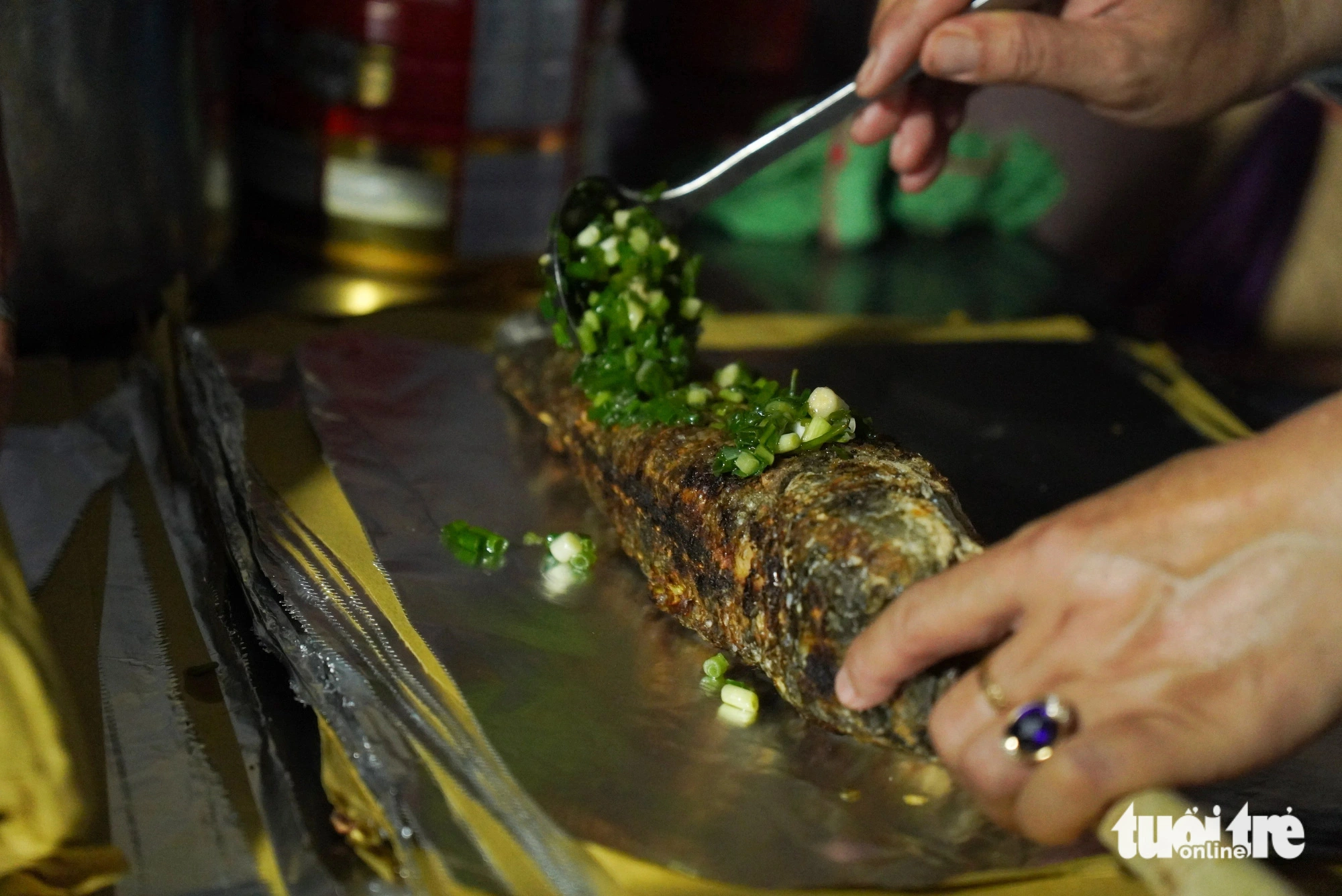


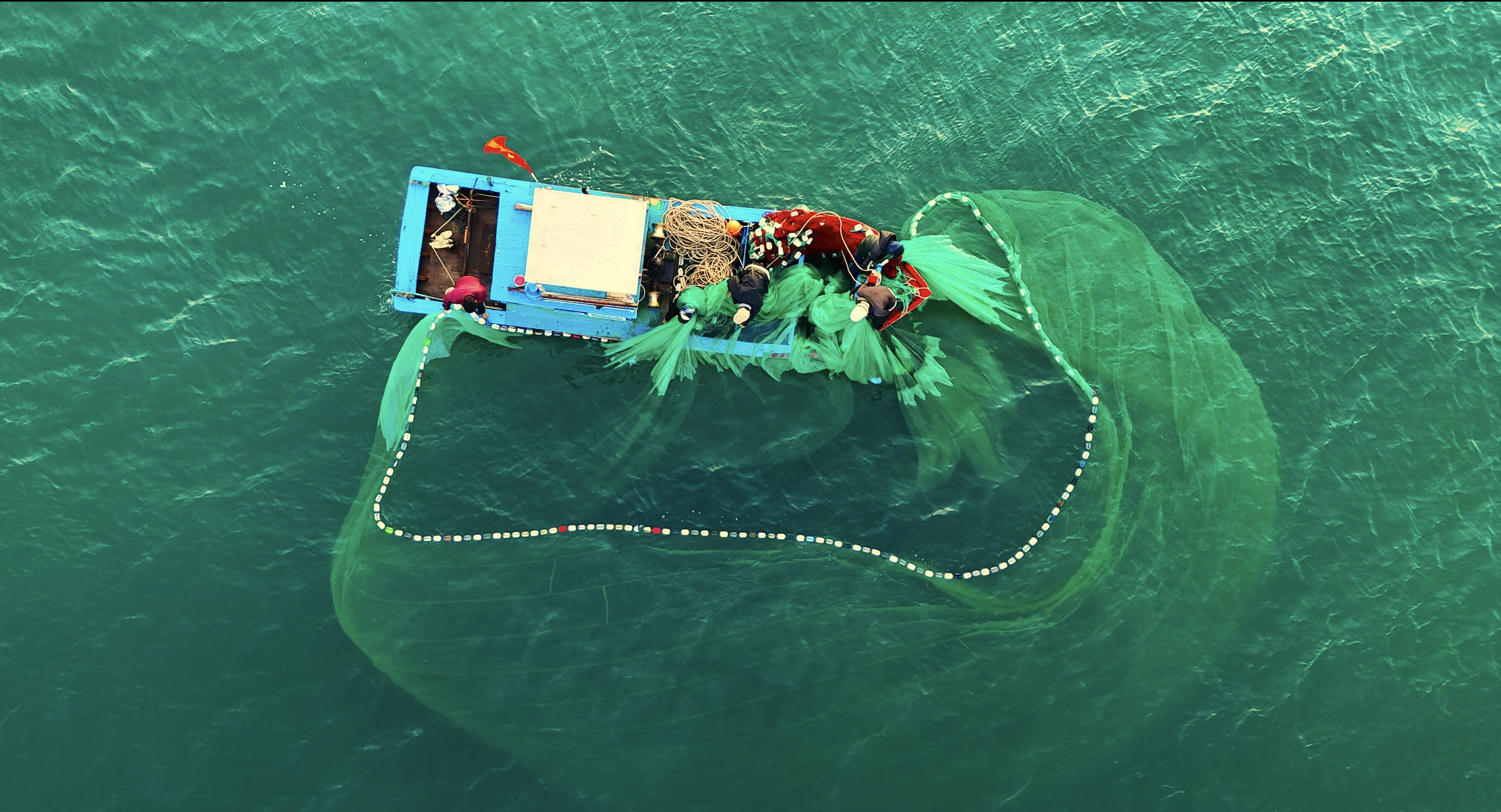
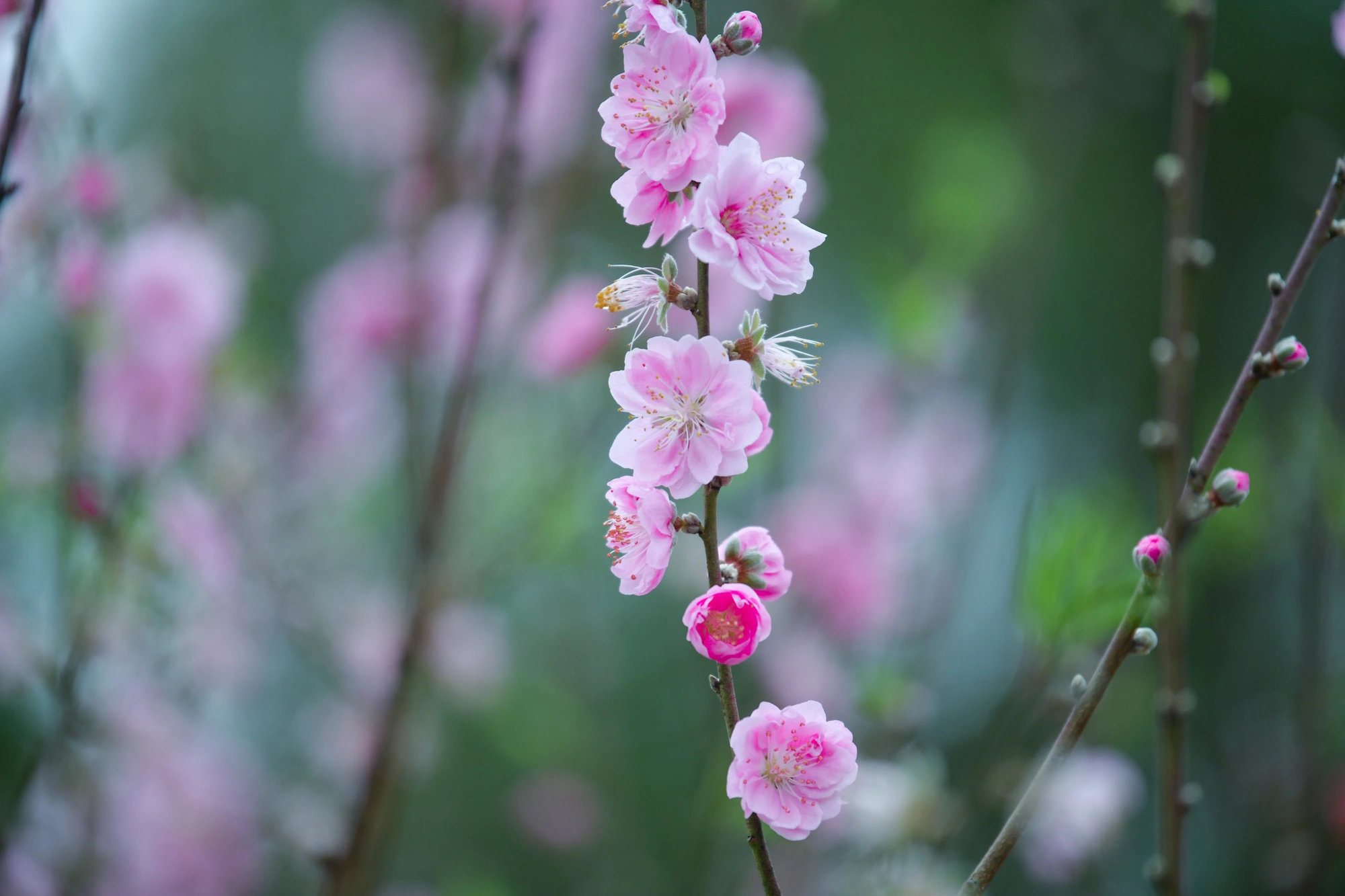
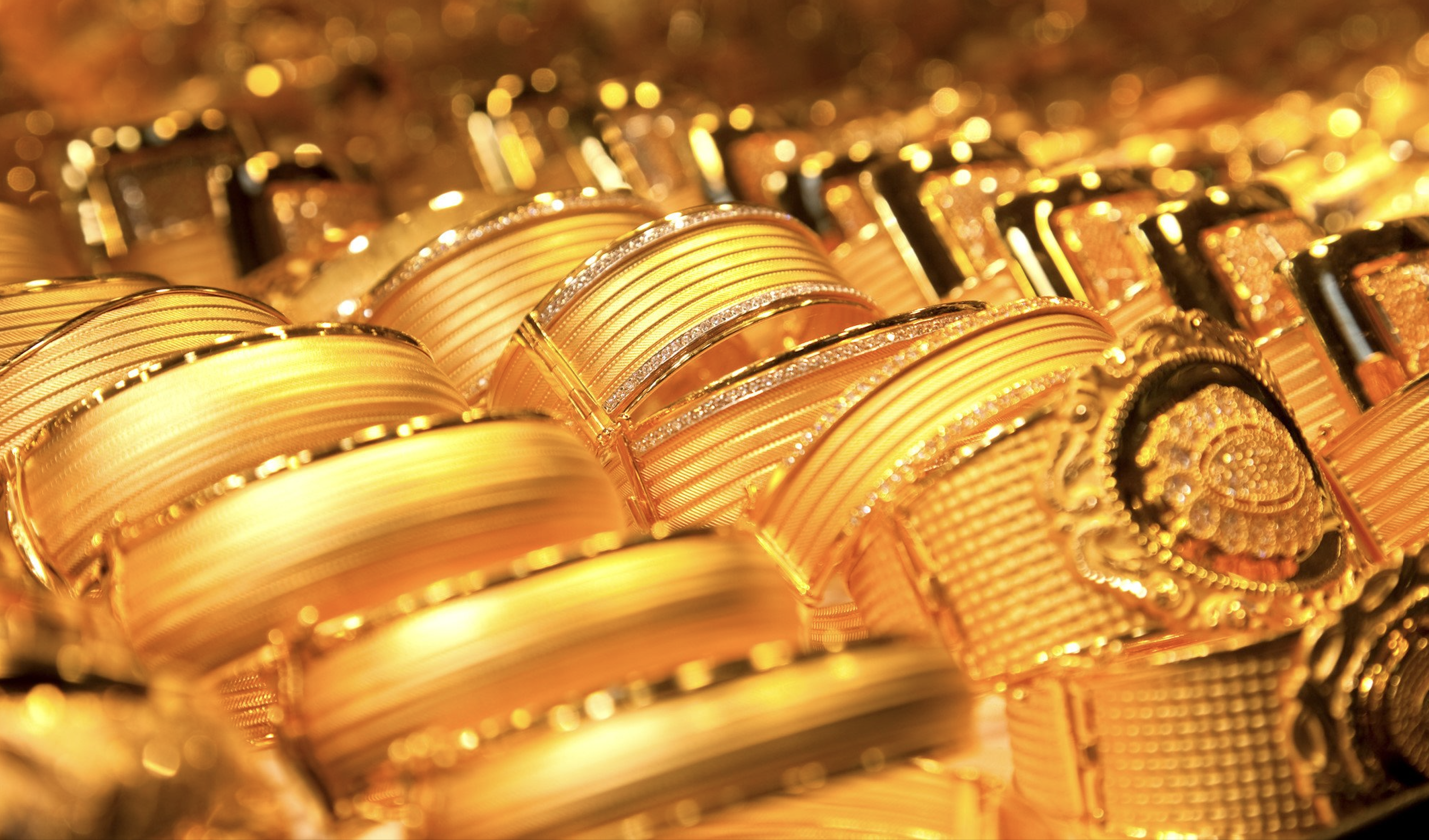




















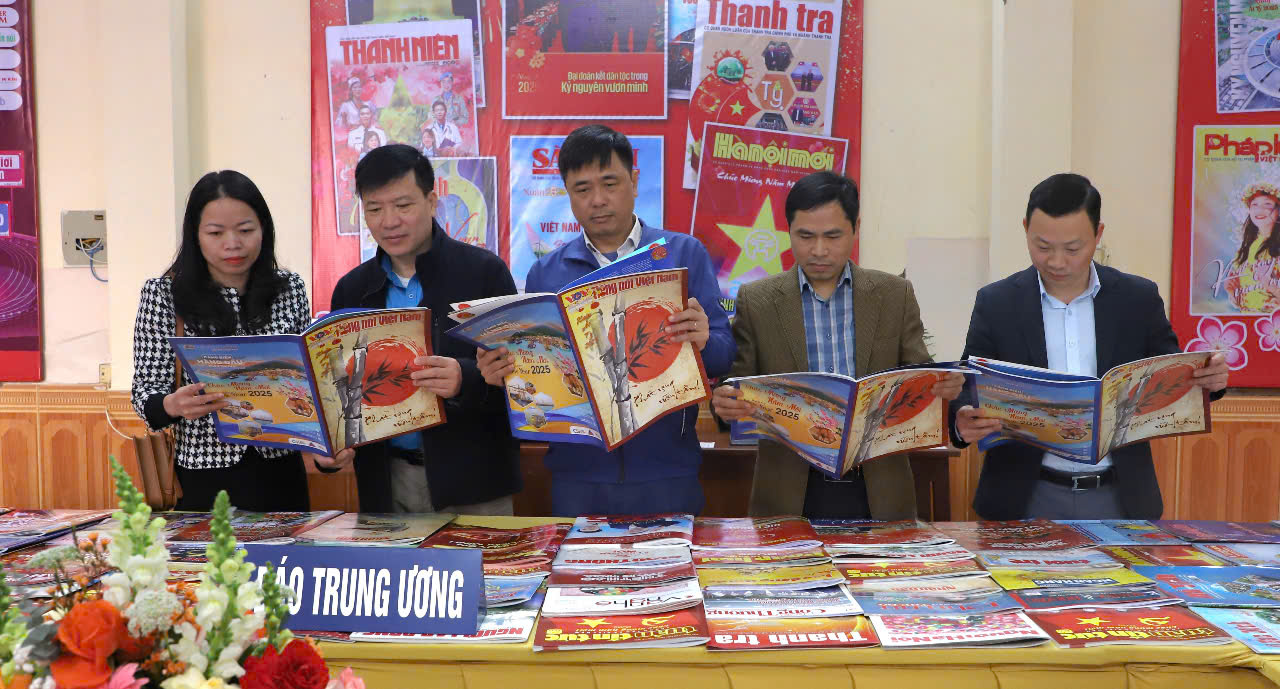




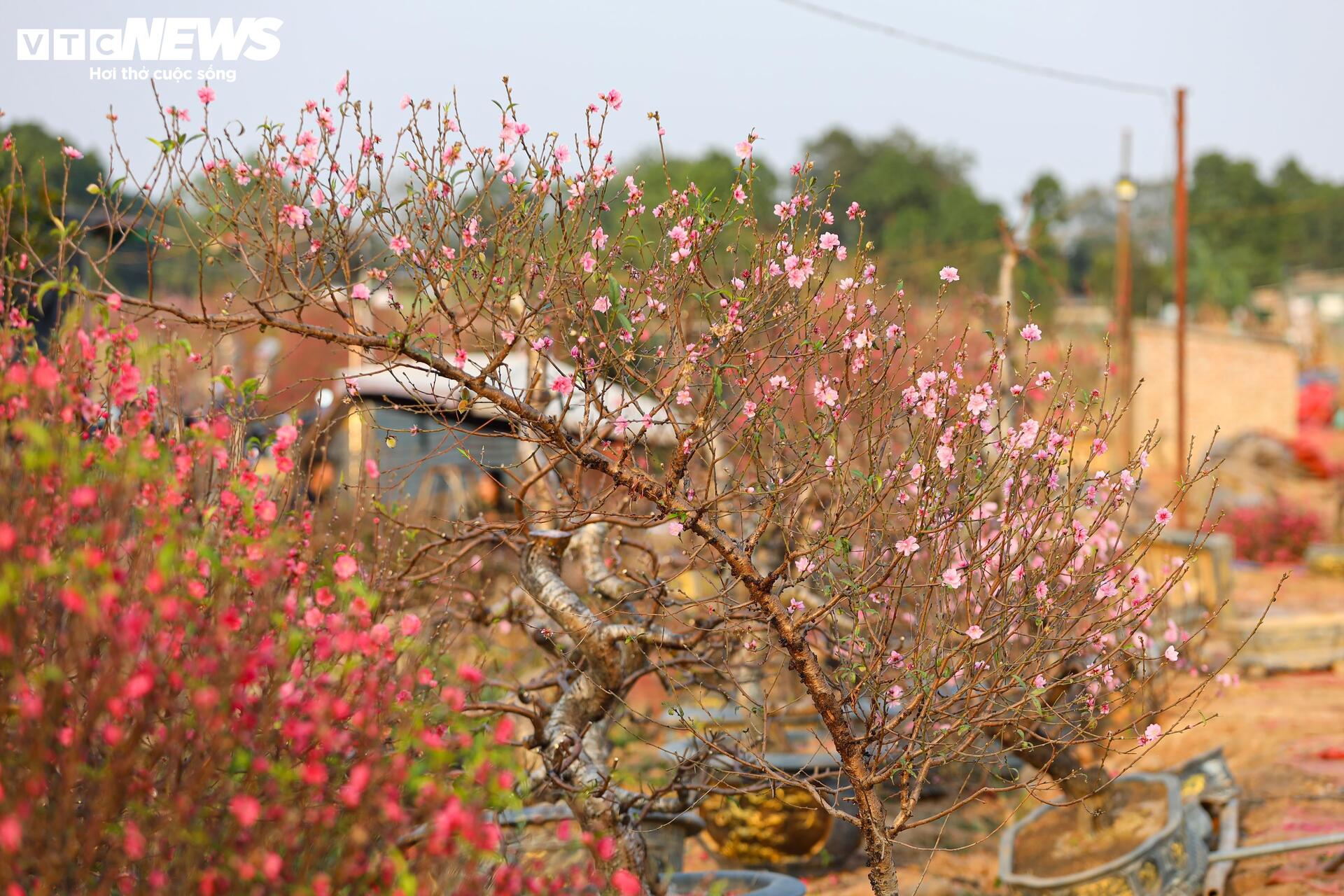


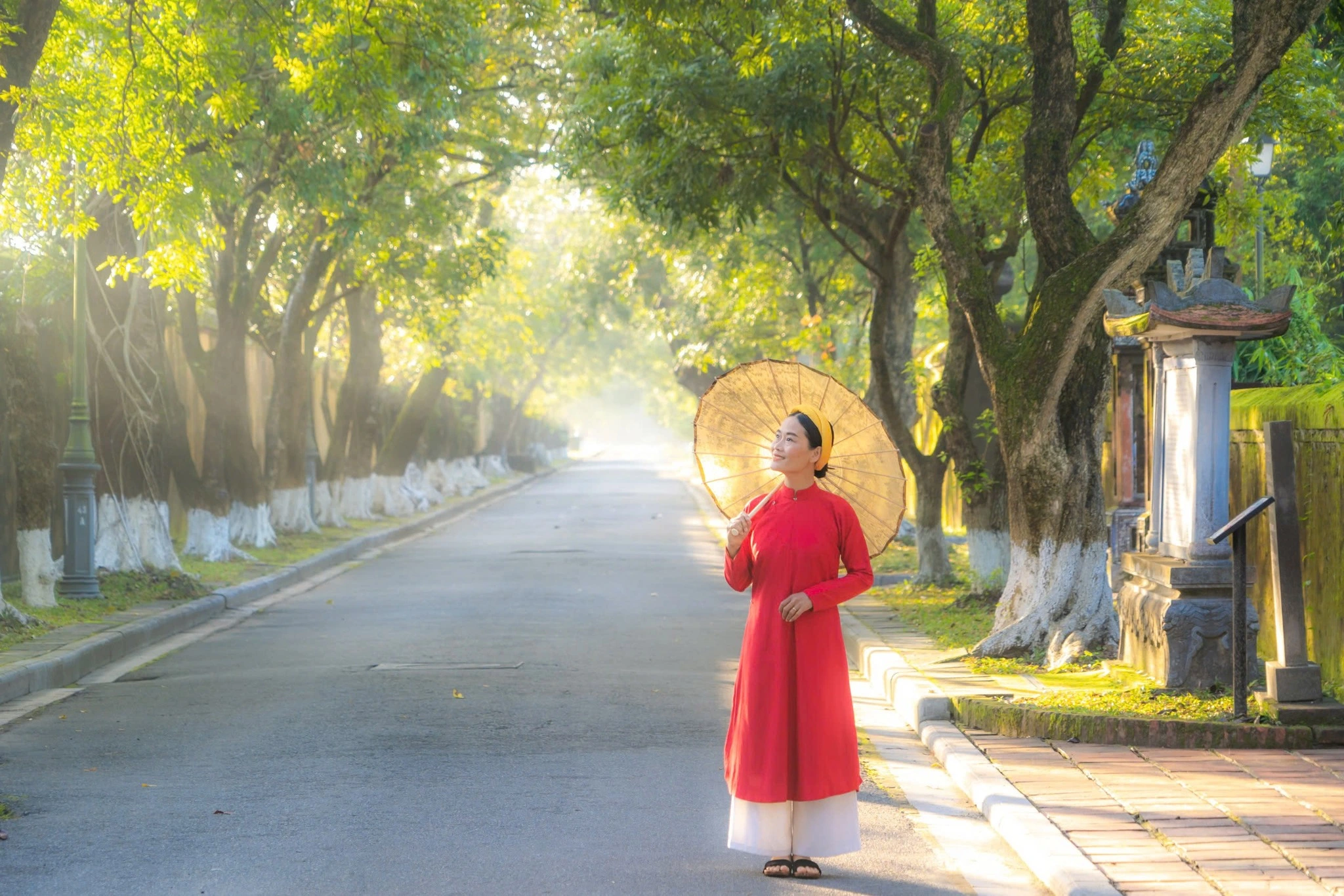

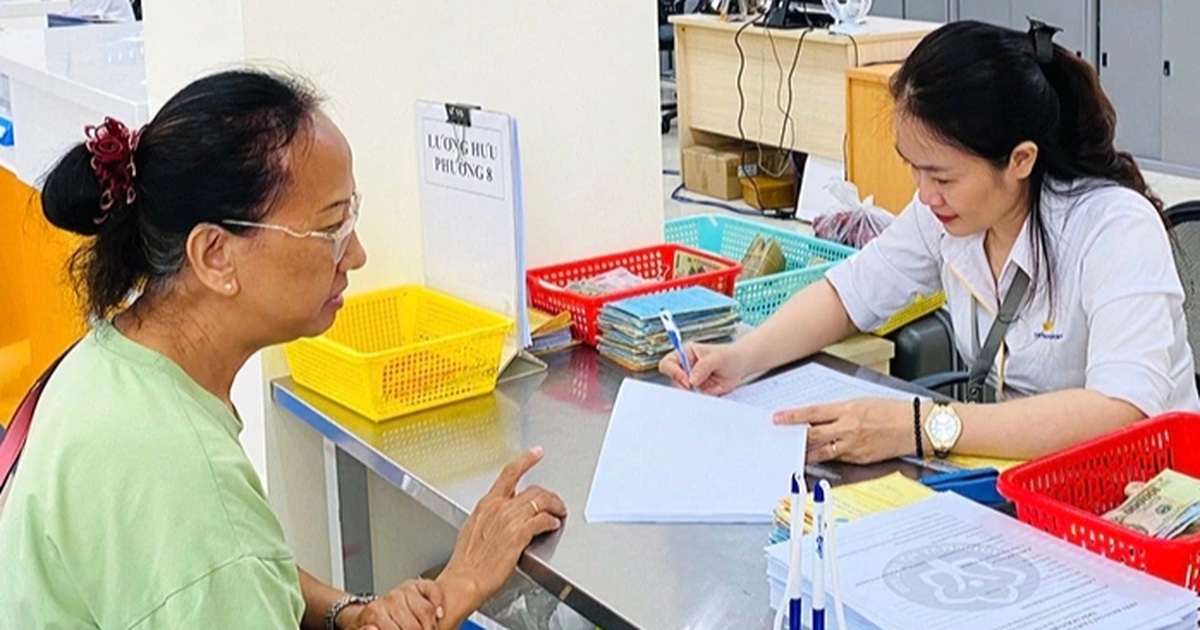


















Comment (0)